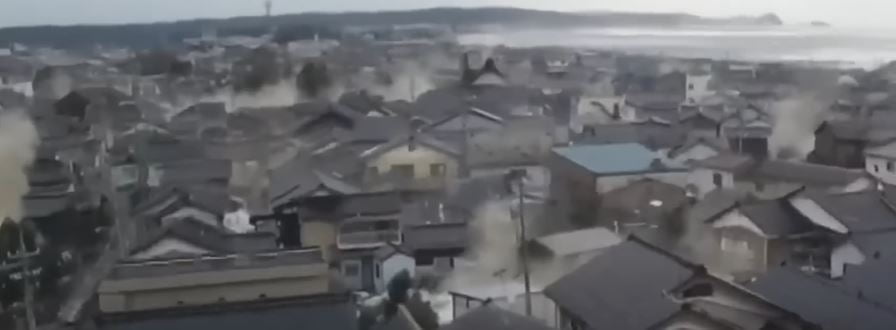Seismic Shock: Magnitude 6.7 Earthquake Strikes Mindanao
On July 11, 2024, the island of Mindanao in the Philippines was jolted by a powerful earthquake measuring 6.7 on the Richter scale. The tremor, as reported by the German Research Center for Geosciences (GFZ), occurred at an astonishing depth of 630 kilometers beneath the Earth’s surface. This significant seismic event has once again highlighted the precarious geological position of the Philippines, situated within the notorious Pacific ‘Ring of Fire.’
Understanding the Impact
Despite the earthquake’s considerable magnitude, the depth at which it occurred has mitigated the potential for surface-level destruction. The Philippines’ seismology agency, in its advisory, assured that the deep offshore quake is unlikely to cause significant damage. However, it did caution the public to remain vigilant for possible aftershocks, which are a common occurrence following such deep seismic events.
Geological Context: The Pacific ‘Ring of Fire’
The Philippines’ geographical location places it in the Pacific ‘Ring of Fire,’ a horseshoe-shaped area in the Pacific Ocean basin known for its high volcanic activity and frequent earthquakes. This region is home to about 75% of the world’s active and dormant volcanoes and experiences roughly 90% of the planet’s earthquakes. The constant tectonic activity is a stark reminder of the natural forces at play beneath the Earth’s crust.
Historical Perspective on Seismic Activity in the Philippines
Historically, the Philippines has experienced numerous devastating earthquakes. The country’s seismic history includes significant events like the 7.8 magnitude quake in 1990 that caused extensive damage in Luzon and resulted in over 1,600 fatalities. Such events underscore the importance of robust earthquake preparedness and resilient infrastructure.
Response and Preparedness Measures
In response to the recent quake, local authorities have activated emergency protocols to ensure public safety. Disaster response teams are on standby, and the government has issued advisories to keep the population informed. Public awareness campaigns about earthquake preparedness are crucial in a region where seismic activity is a regular threat.
The Role of Seismological Research Centers
Institutions like the German Research Center for Geosciences (GFZ) play a critical role in monitoring and reporting seismic activity worldwide. The data provided by such organizations help governments and disaster management agencies to assess risks and implement appropriate measures. In the Philippines, the Philippine Institute of Volcanology and Seismology (PHIVOLCS) is instrumental in monitoring volcanic and seismic activity, providing timely warnings, and conducting research to better understand the region’s geological dynamics.
The Aftermath: Anticipating Aftershocks
While the immediate impact of the 6.7 magnitude earthquake in Mindanao appears to be limited, the threat of aftershocks looms. Aftershocks can often cause additional damage and pose risks to already weakened structures. Therefore, continuous monitoring and preparedness are essential to mitigate the risks associated with these secondary tremors.
Infrastructure and Building Codes
One of the key strategies to reduce earthquake damage is the enforcement of stringent building codes. In earthquake-prone regions like the Philippines, buildings and infrastructure must be designed to withstand significant seismic forces. The implementation of modern engineering practices and regular inspections can help ensure the safety and resilience of structures.
Community Preparedness and Education
Educating the public about earthquake preparedness is another vital aspect of disaster risk reduction. Communities need to be aware of the steps to take before, during, and after an earthquake. Regular drills, informative campaigns, and the establishment of community-based disaster response teams can significantly enhance resilience.
International Collaboration and Support
Global collaboration in seismological research and disaster management can lead to improved outcomes during seismic events. Sharing data, research findings, and best practices helps countries better prepare for and respond to earthquakes. The international community often provides technical assistance, funding, and relief support to countries affected by major earthquakes.
Moving Forward: Enhancing Resilience
The recent earthquake in Mindanao serves as a reminder of the need for continuous vigilance and preparedness. Strengthening infrastructure, enhancing early warning systems, and fostering community resilience are essential steps in mitigating the impacts of future seismic events. As the Philippines navigates the challenges posed by its geological setting, a proactive and informed approach will be key to safeguarding lives and property.
Soumya Smruti Sahoo is a seasoned journalist with extensive experience in both international and Indian news writing. With a sharp analytical mind and a dedication to uncovering the truth, Soumya has built a reputation for delivering in-depth, well-researched articles that provide readers with a clear understanding of complex global and domestic issues. Her work reflects a deep commitment to journalistic integrity, making her a trusted source for accurate and insightful news coverage.



